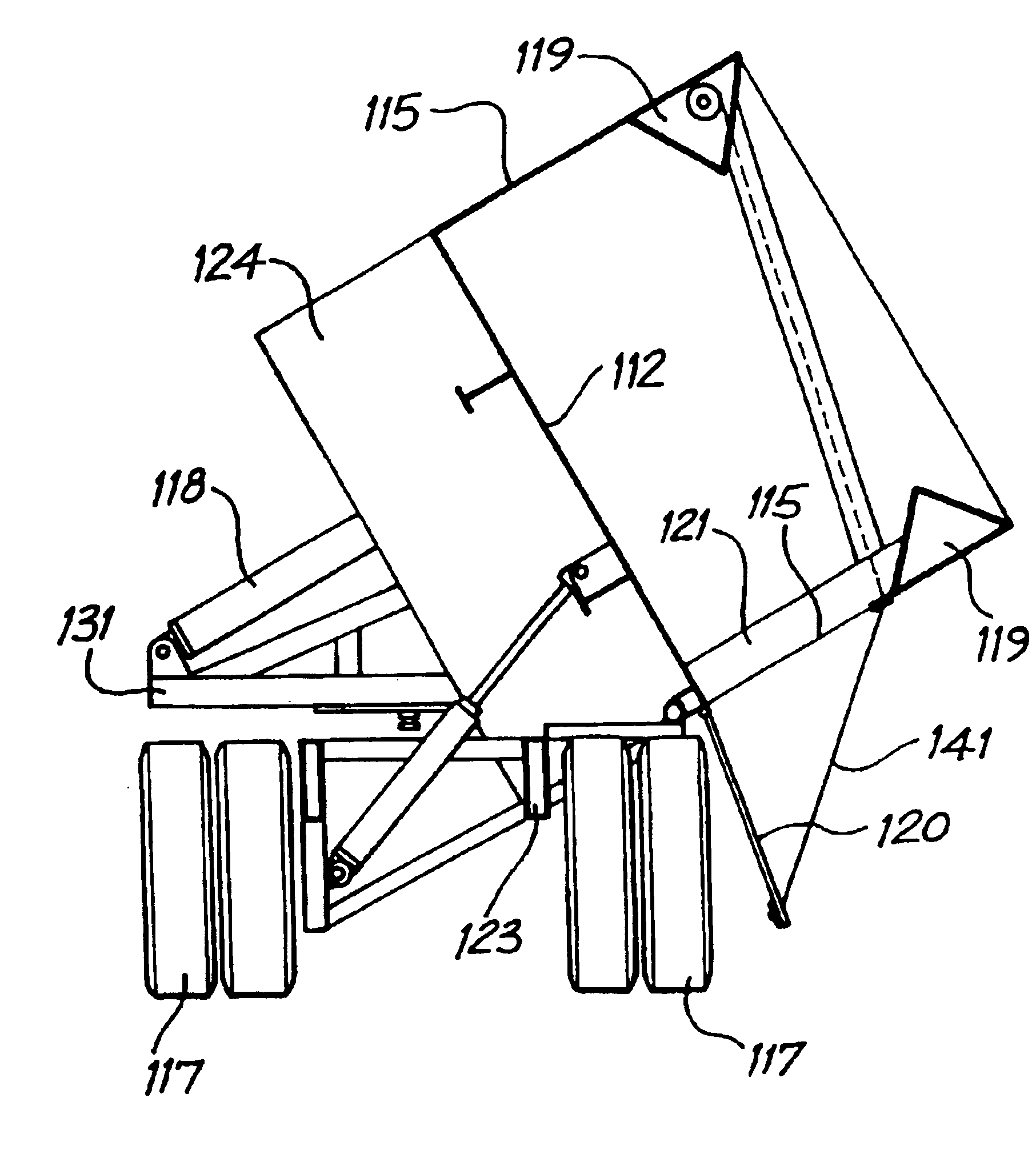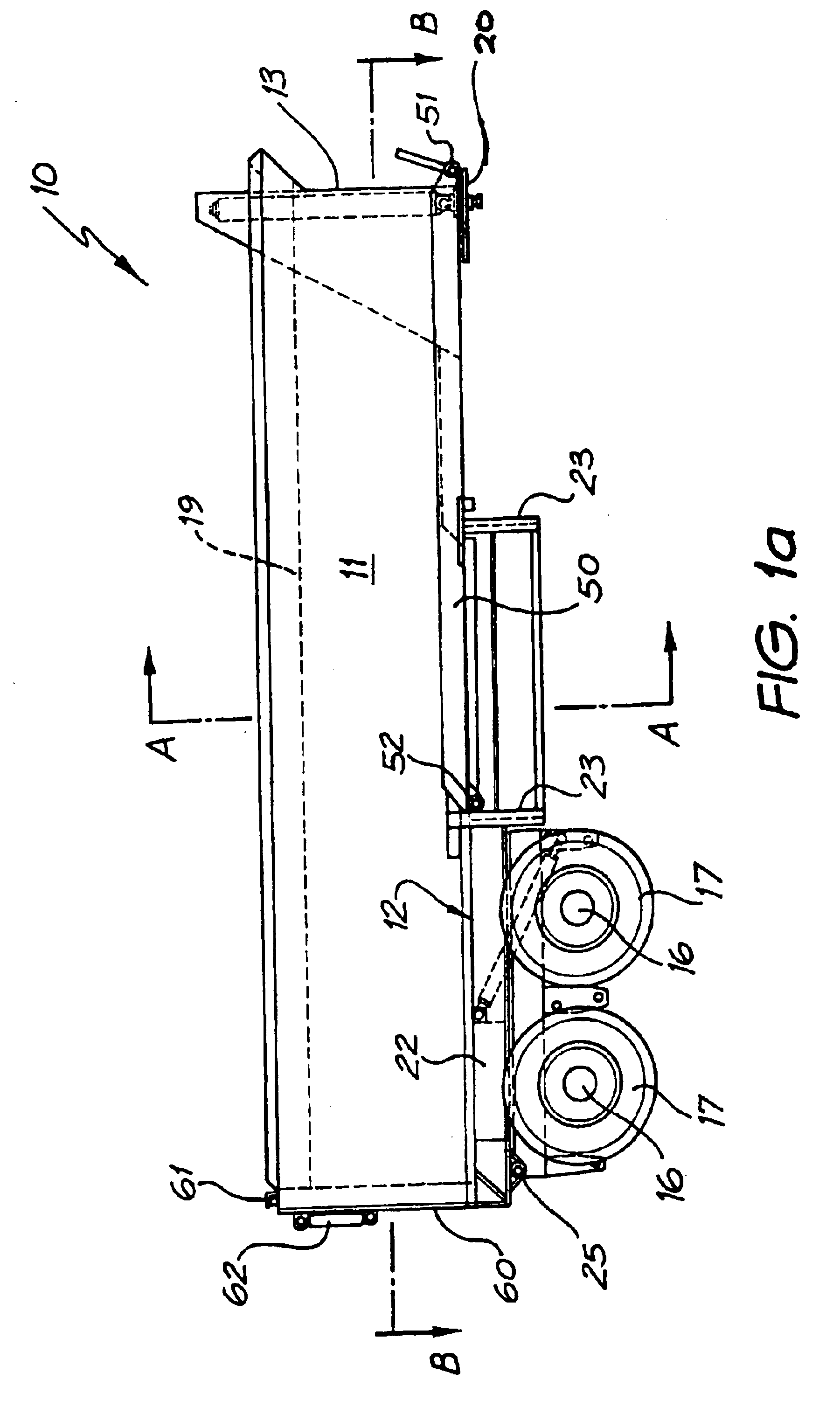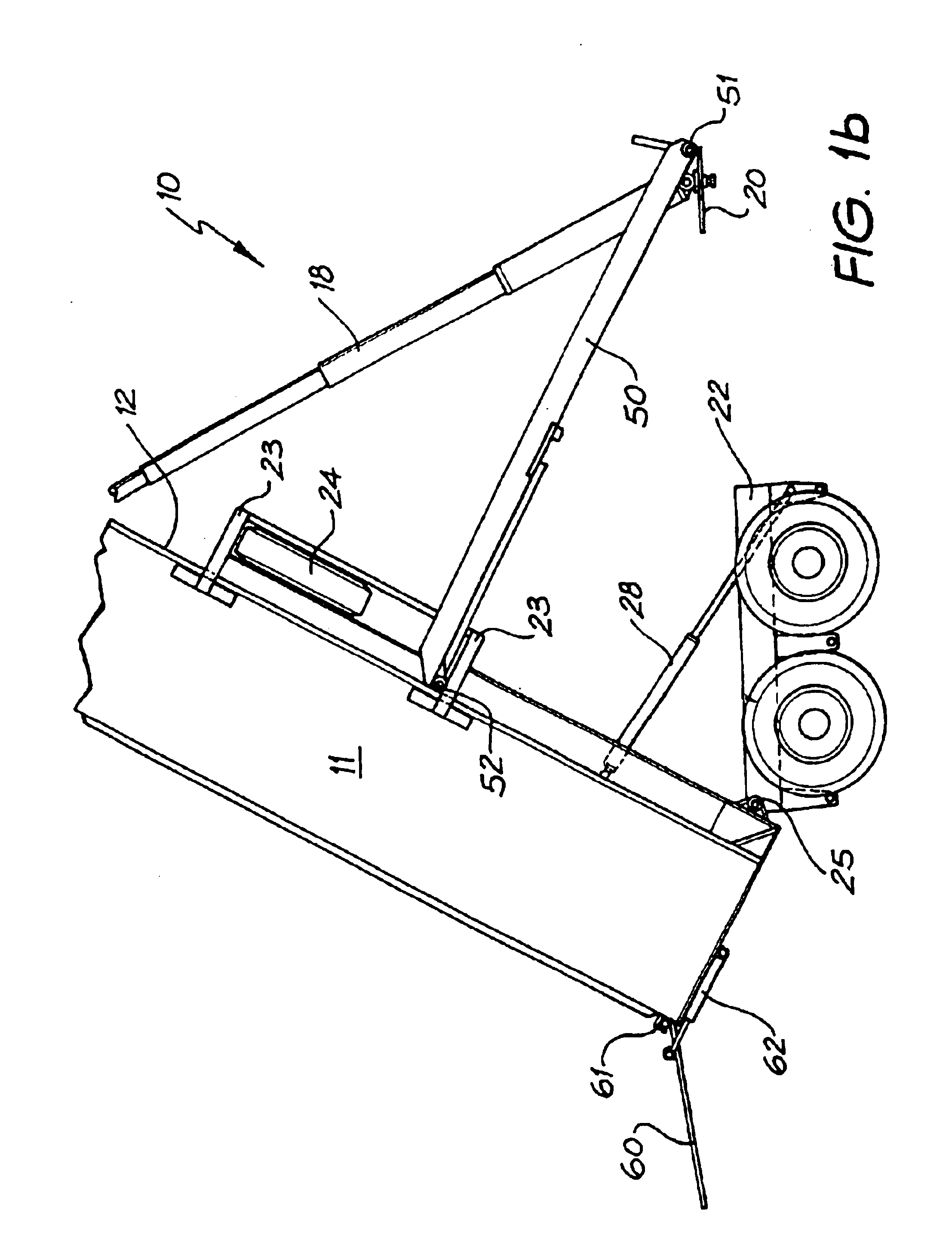Tip trailer
a trailer and tip technology, applied in the field of tip trailers, can solve the problems of affecting the design of conventional bins, affecting the safety of passengers, and limiting factors, and achieve the effect of preventing the twisting of the bin during tipping and simple and relatively inexpensive hydraulics
- Summary
- Abstract
- Description
- Claims
- Application Information
AI Technical Summary
Benefits of technology
Problems solved by technology
Method used
Image
Examples
Embodiment Construction
FIGS. 1a and 1b show a portion of a tip trailer 10 in accordance with the present invention. FIG. 1a shows a bin 11 of the tip trailer 10 in a travel position, and FIG. 1b shows a bin 11 of the tip trailer 10 in a tipped position. In accordance with the first aspect of the invention, the bin 11 of the tip trailer 10 has a floor 12, a front wall 13, two side walls and a plurality of struts 21 (refer to FIG. 2b) extending from the floor 12 to the upper extremity of the side walls. The tip trailer 10 further includes two front axles (not shown) and corresponding front wheels (not shown) and two rear axles 16 and corresponding rear wheels 17. Tipping means 18 are operable to tip the bin 11, as shown in FIG. 1b. In the embodiment of the invention shown in FIGS. 1a and 1b, the tipping means 18 is a hydraulic ram. The tip trailer further includes overhead beams 19 which are located substantially at an upper extremity of each side wall of the bin 11, and which extend substantially along a l...
PUM
 Login to View More
Login to View More Abstract
Description
Claims
Application Information
 Login to View More
Login to View More - R&D
- Intellectual Property
- Life Sciences
- Materials
- Tech Scout
- Unparalleled Data Quality
- Higher Quality Content
- 60% Fewer Hallucinations
Browse by: Latest US Patents, China's latest patents, Technical Efficacy Thesaurus, Application Domain, Technology Topic, Popular Technical Reports.
© 2025 PatSnap. All rights reserved.Legal|Privacy policy|Modern Slavery Act Transparency Statement|Sitemap|About US| Contact US: help@patsnap.com



